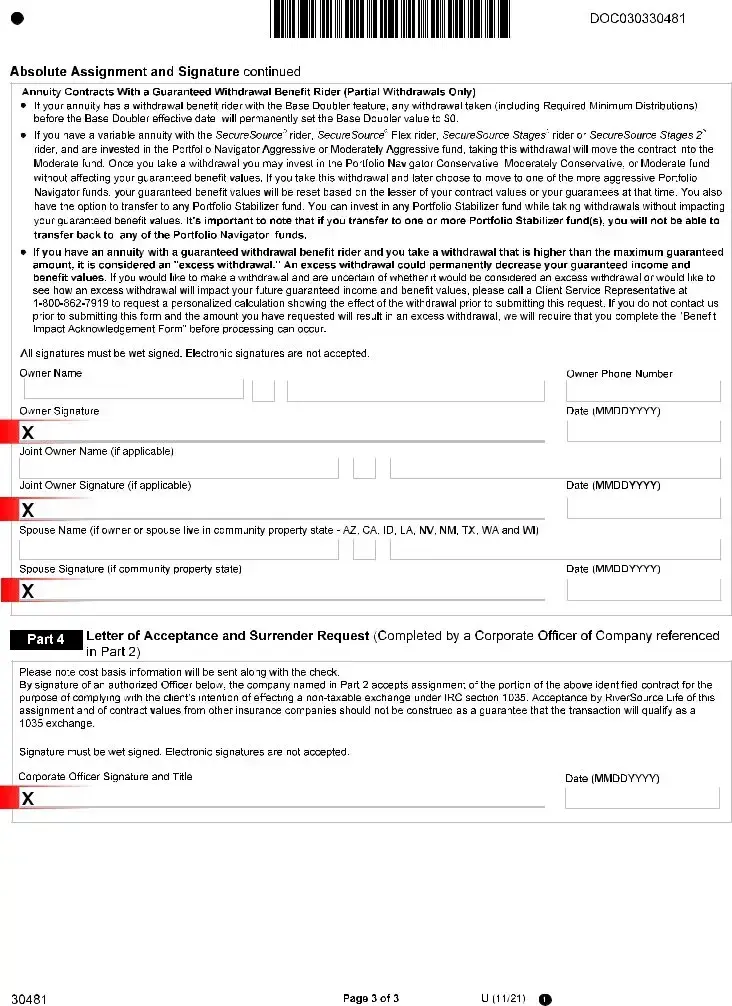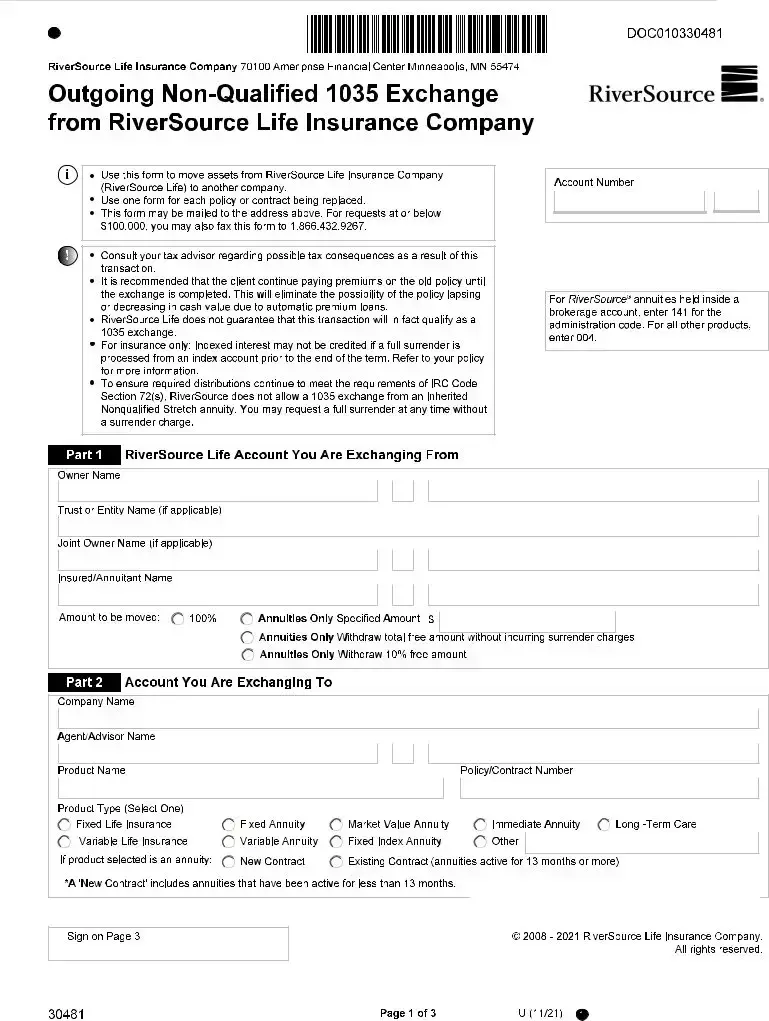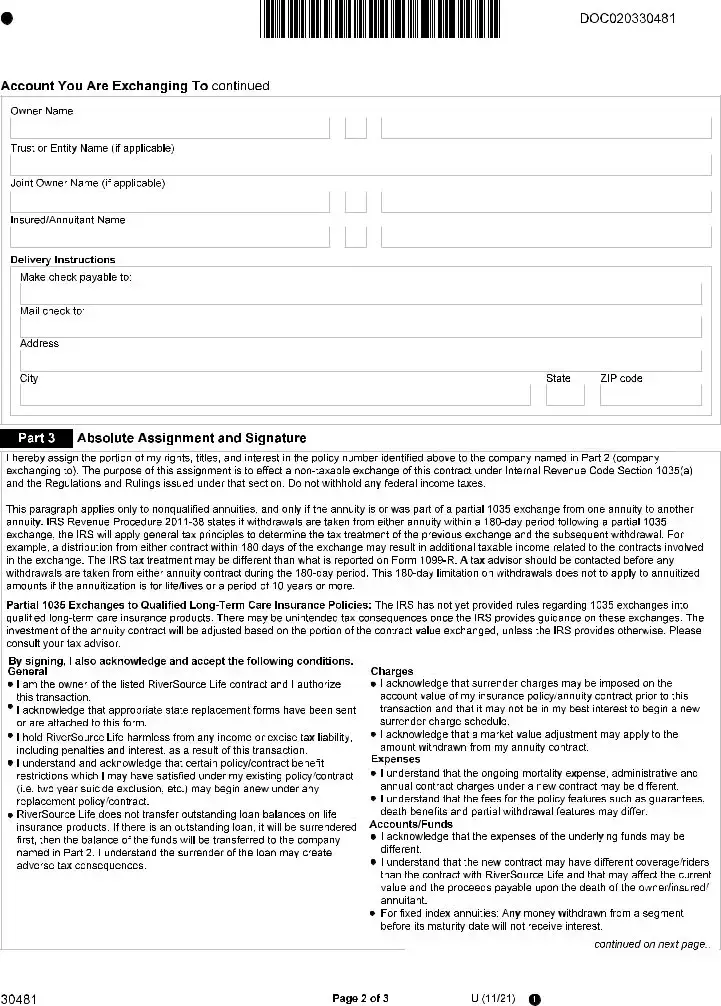What is a 1035 Exchange?
A 1035 Exchange is a provision in the Internal Revenue Code that allows policyholders to transfer funds from one life insurance or annuity contract to another without incurring immediate tax liabilities. Essentially, it allows you to switch products while deferring any taxes that would typically arise from cashing in the old policy or contract.
Who can use the 1035 Exchange form?
Anyone holding a life insurance policy or annuity may utilize the 1035 Exchange form to transfer their assets to another insurer or product. However, it’s crucial to consult your tax advisor beforehand to ensure that the exchange meets your specific needs and to understand any potential tax implications.
How many forms do I need to complete for multiple policies?
You will need to fill out a separate 1035 Exchange form for each policy or contract you wish to transfer. This ensures that each transaction is accurately processed and recorded. Each form is specific to its respective policy, making tracking easier for both you and the financial institutions involved.
What happens if I don't continue paying premiums on my old policy?
If you stop paying premiums on your old policy before the exchange is completed, you risk having that policy lapse. Gaps in premium payments could reduce its cash value or even lead to a complete loss of the policy. To avoid this, it’s recommended to keep paying premiums until the exchange process is finalized.
Can I request a partial transfer using the 1035 Exchange?
Yes, the 1035 Exchange form allows you to specify how much you'd like to move. You can choose to transfer the entire amount or a specified portion as long as it aligns with your other financial goals and any current contract rules. Remember, for annuities, specific withdrawal amounts may be available without incurring surrender charges.
Is it guaranteed that my transaction qualifies for a 1035 Exchange?
No, RiverSource Life does not guarantee that all transactions will qualify for a 1035 Exchange. Each request may be evaluated based on the specific policies involved and their compliance with IRS regulations. Ensure that you meet all the eligibility criteria before submitting your request.
What types of products can I exchange using this form?
You can exchange various types of financial products, including fixed life insurance, fixed and variable annuities, and long-term care insurance. However, if you are dealing with an inherited nonqualified stretch annuity, note that RiverSource does not permit a 1035 exchange for that specific product.
What if I have more questions about the 1035 Exchange process?
If you have further questions about the 1035 Exchange process, it’s advisable to reach out directly to your insurance agent, financial advisor, or tax consultant. They can provide personalized assistance and clarity based on your unique situation, making the process smoother and more informative.














